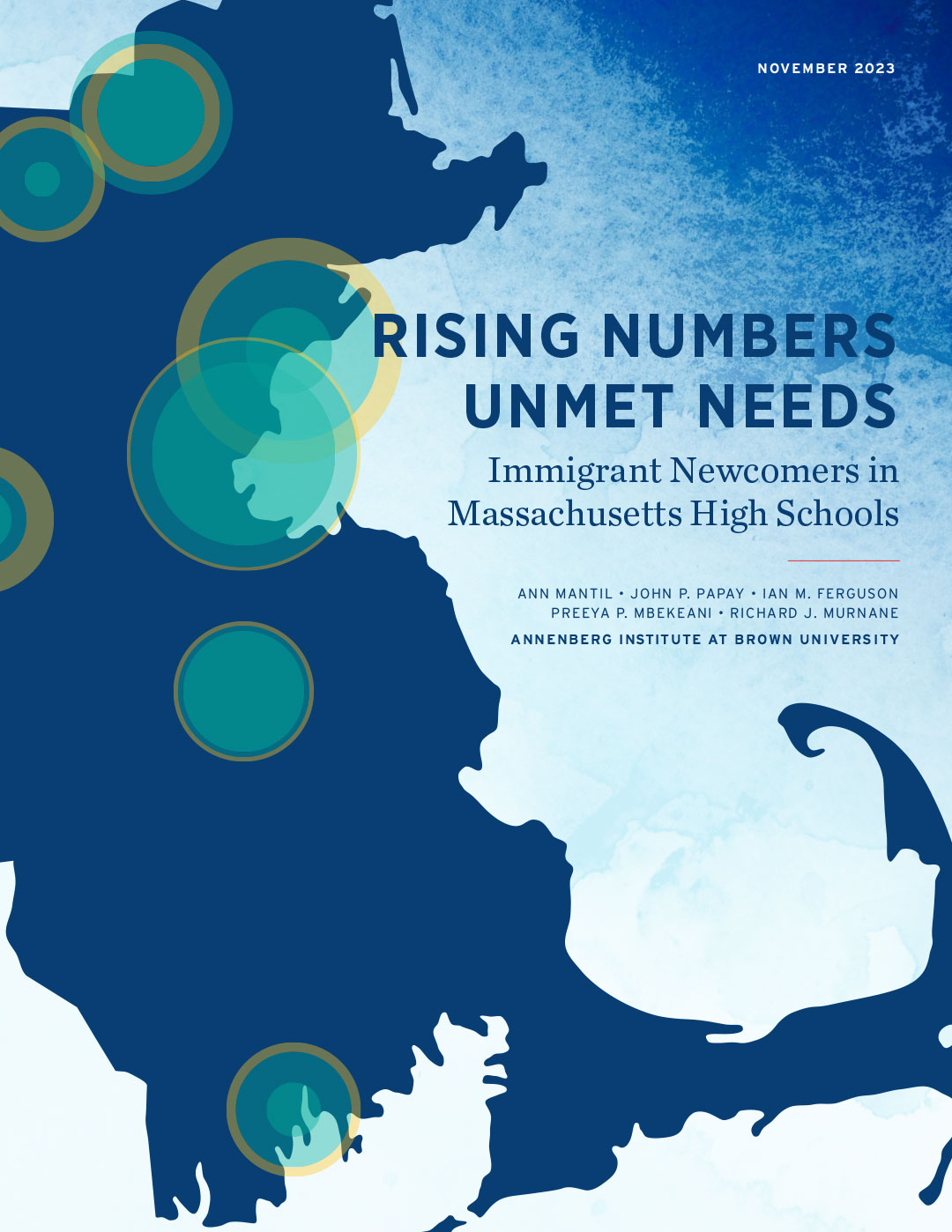Massachusetts is widely lauded as a national model for K-12 education, given its consistently high levels of academic achievement and educational attainments. In our 2020 report, Lifting All Boats?, we detailed the substantial progress the state’s educational system has made since the Education Reform Act of 1993, as well as the ways in which focusing on average improvements concealed substantial inequalities throughout the system, with a particular focus on disparities by family income.
Here, we turn our attention to a critical but understudied group, immigrant newcomers to Massachusetts public schools. We define newcomers as English learners (ELs) in their first 12 months of schooling in the United States. In this report, we focus on newcomers who arrive in grades 9-12, bringing linguistic and cultural diversity to the Commonwealth’s high schools. These students, many of whom are overage and with interrupted formal educational experiences, have limited time to become proficient in English and fulfill all the requirements for a high-school diploma, including achieving the minimum required score on each of the Commonwealth’s three Massachusetts Comprehensive Assessment System (MCAS) tests. They face the dual challenges of learning a new language and mastering high-school content standards in that new language, in many cases on a very abbreviated timeline.
High-school newcomers are a large and growing group—in the 2021-22 school year (hereafter, 2022), nearly 6,000 entered a Massachusetts public high school, representing 7% of all new high-school students in the Commonwealth. One in six entering high-school students in urban districts is a newcomer.
They are also a group of critical concern—fewer than one-third meet English proficiency targets each year, and newcomers represent 32% of students who never pass one or more of the 10th grade MCAS tests. Only 54% of newcomers graduate from high school, and their rates of four-year college enrollment are also quite low. Sustaining educational progress in the Commonwealth over the coming decades will require school systems to do more to address these students’ needs.
Here, we report on the demographic characteristics and educational outcomes of highschool newcomers over time, using longitudinal data from the Massachusetts Department of Elementary and Secondary Education (DESE). A second report will examine differences in outcomes for high-school newcomers by school district.

